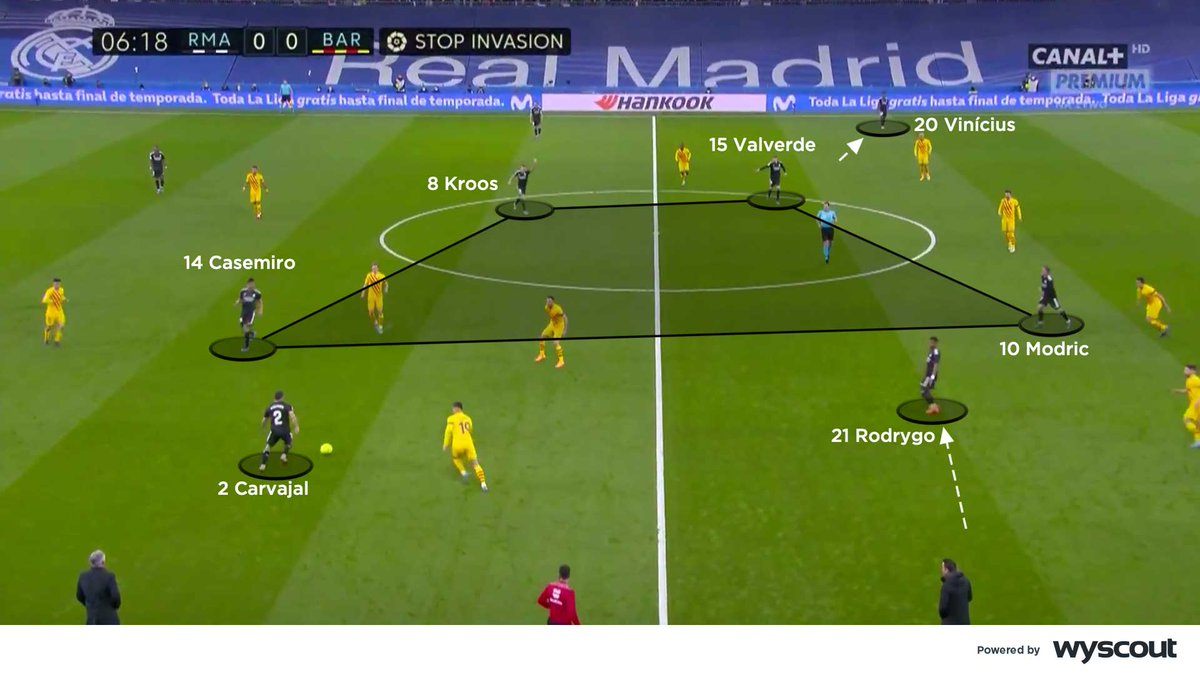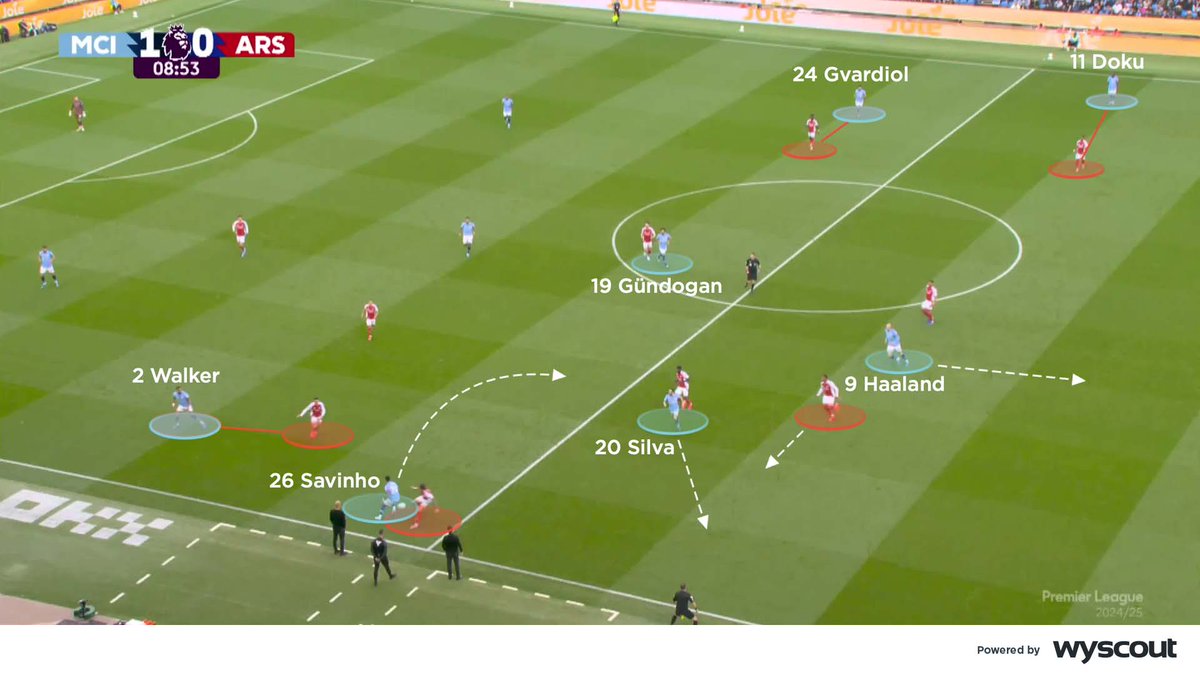Fresh analysis thread 🙌
How Barcelona used Pierre-Emerick Aubameyang and Frenkie de Jong to tear Real Madrid apart in #ElClasico win... 🧐🧵
🔋 @Wyscout
#FCBarcelona
How Barcelona used Pierre-Emerick Aubameyang and Frenkie de Jong to tear Real Madrid apart in #ElClasico win... 🧐🧵
🔋 @Wyscout
#FCBarcelona
Barcelona were set up in a 4-3-3, against a Madrid 4-4-2 defensive block. Torres moved inside to support centre-forward Aubameyang. De Jong and Pedri widened to support through the inside channels, with Busquets left as the single pivot ahead of the two centre-backs... 🧐🧵 

Busquets dropped into defence to draw one of Madrid’s central midfielders up, and Pedri drifted wider to drag the other out. This often left De Jong as the free man to receive in the inside channel when Barcelona’s back line could access him... 🧐🧵 

The high and wide positioning of Dembélé and Torres, created gaps in Madrid’s back line, especially when their full-backs decided to mark the opponents tightly. Passes over and around then exploited these gaps, with Torres particularly effective when running beyond Nacho... 🧐🧵 

To access the wingers’ movements beyond the Madrid defence, Aubameyang dropped in to connect with the midfield. As Busquets, De Jong and Pedri were still man-marked, they could only receive to play forward as part of a third-man combination... 🧐🧵 

With no recognised centre-forward, Ancelotti set Real up with a box midfield during build-up, with Modric and Federico Valverde as two number 10s between the lines (below). Wingers Rodrygo and Vinícius held the team’s width, attacking around and beyond Barca’s full-backs... 🧐🧵 

Madrid converted into a temporary back three to build, with Nacho taking up a reserved position from left-back, allowing Vinícius to isolate his opponent for as long as possible. Rodrygo moved into a narrow position and Carvajal pushed forward to provide the width... 🧐🧵 

• • •
Missing some Tweet in this thread? You can try to
force a refresh
















